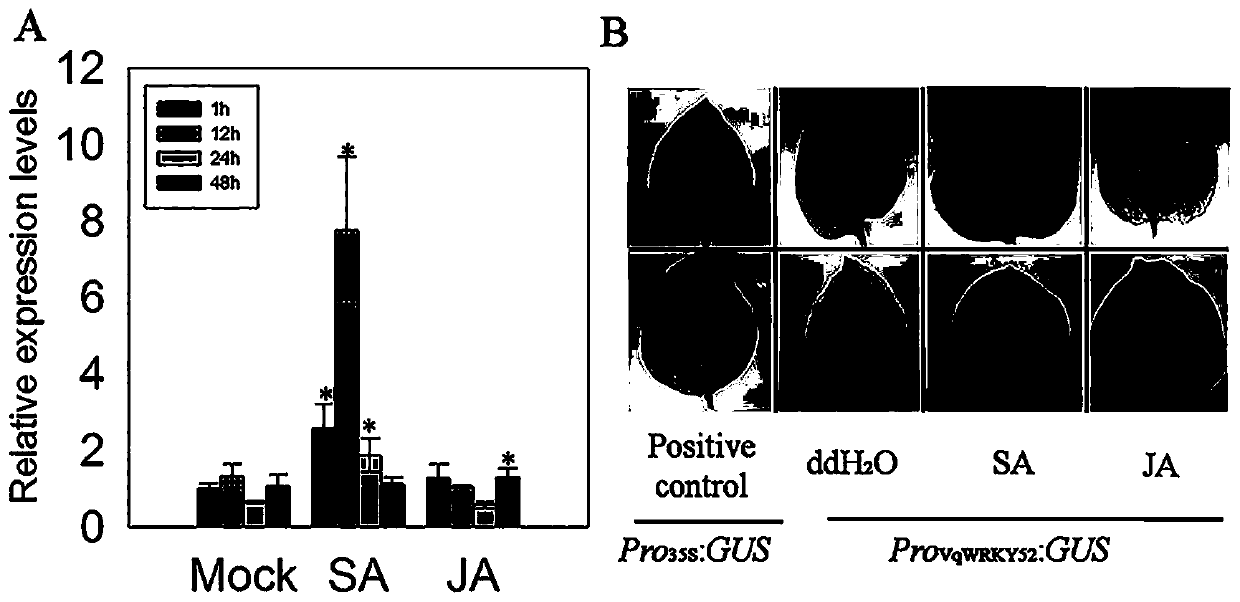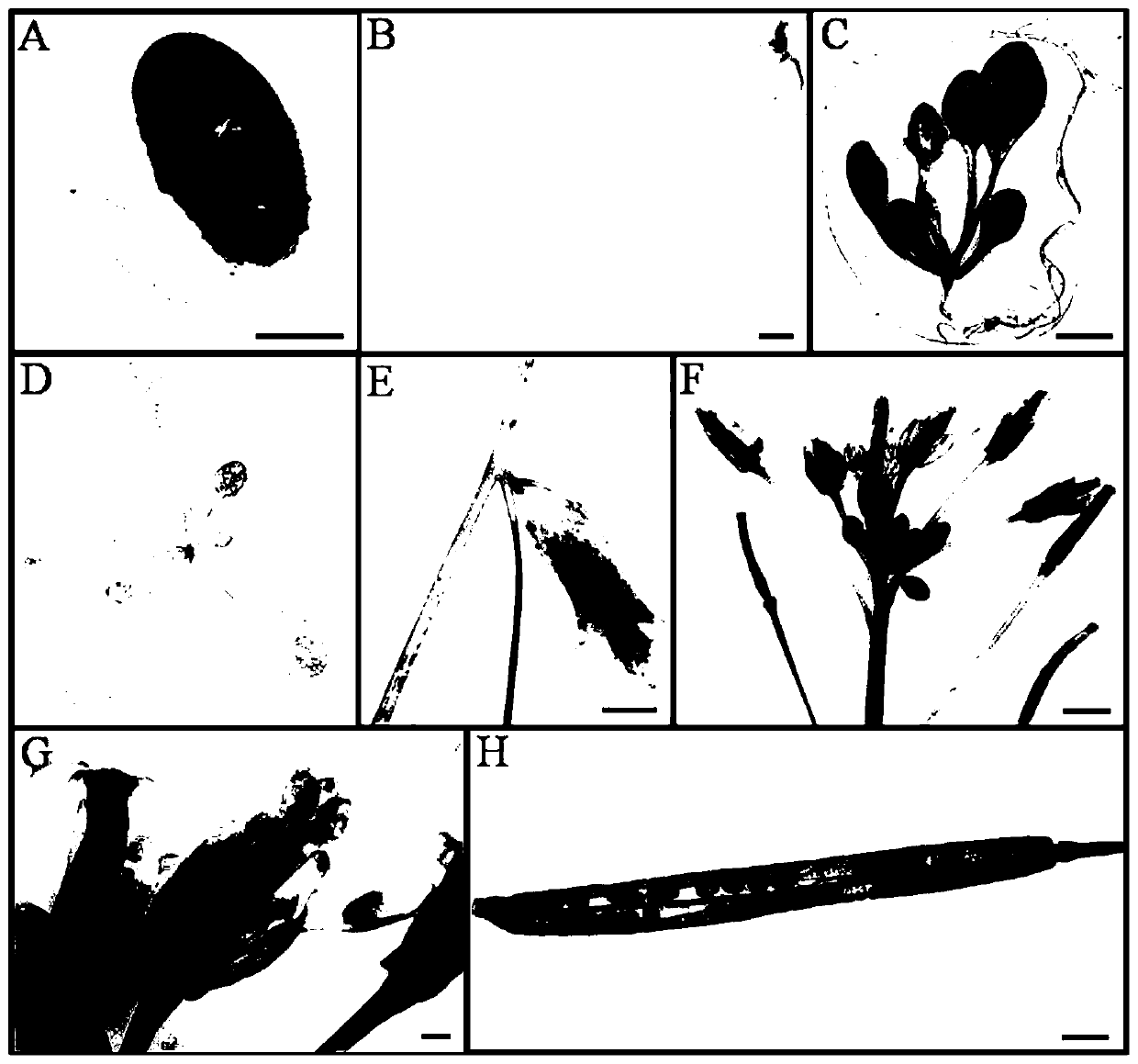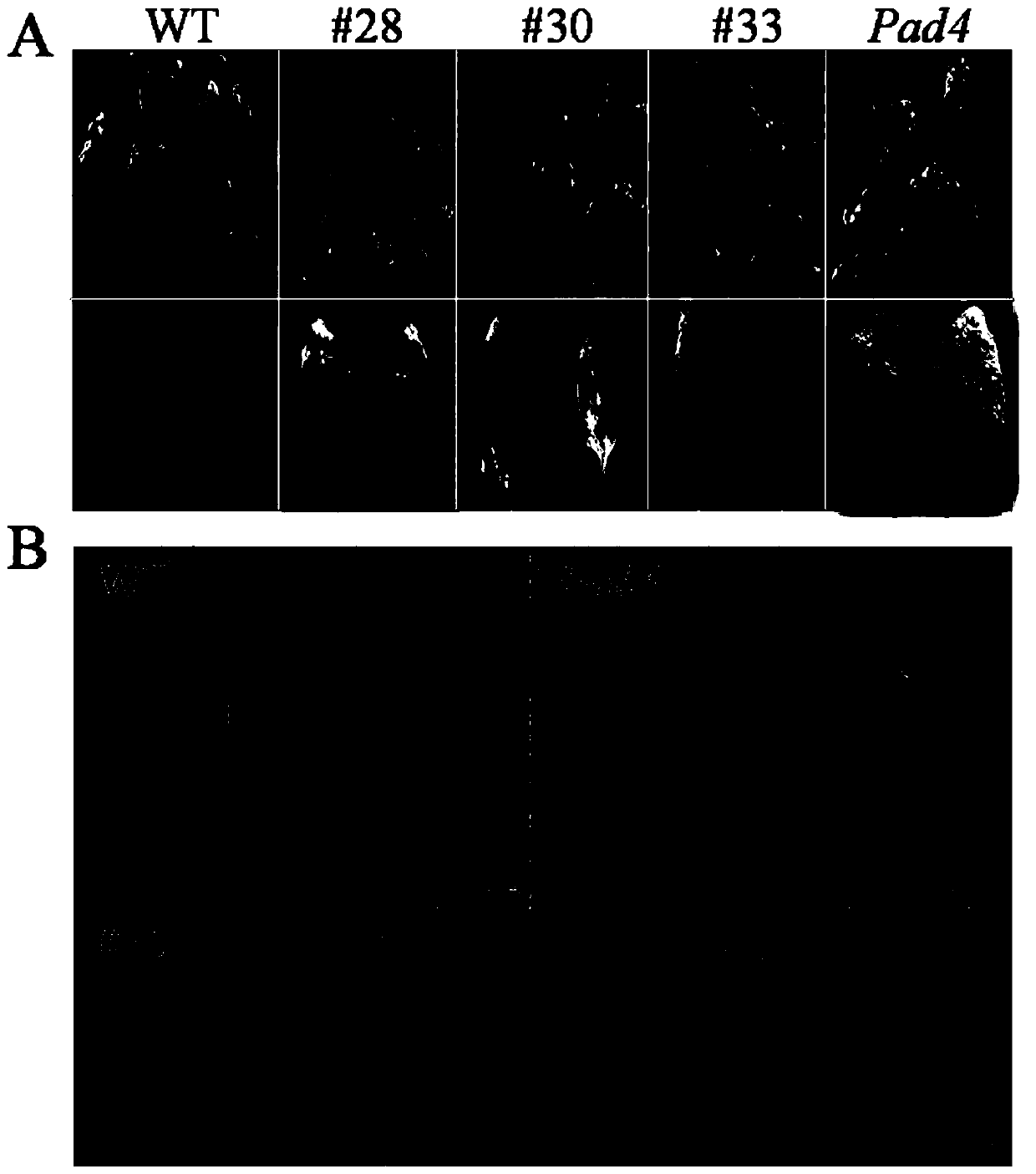Disease resistance gene of wild grapevine and its application
A disease-resistant gene, hair grape technology, applied in the application, genetic engineering, plant genetic improvement and other directions, can solve the problem that the quality is not as good as European grape varieties
- Summary
- Abstract
- Description
- Claims
- Application Information
AI Technical Summary
Problems solved by technology
Method used
Image
Examples
Embodiment 1
[0036] Example 1: VqWRKY52 response to hormones and tissue-specific and spatio-temporal specific expression in Arabidopsis
[0037] In previous studies, the applicant found that the expression of VqWRKY52 was induced by powdery mildew of grapevine. In order to determine its response to SA and JA, the expression of VqWRKY52 was analyzed under the treatment of these two hormones. hours, VqWRKY52 could be strongly induced by SA, but not by MeJA ( figure 1 A).
[0038] In order to further verify this result, the 2107bp promoter region of VqWRKY52 was cloned and fused in front of the GUS reporter gene to form a Pro VqWRKY52 : GUS reporter structure, transiently transformed tobacco to analyze promoter activity in response to hormones, using Pro 35S :GUS as a control. The results showed that the VqWRKY52 promoter could be induced by SA but not by JA ( figure 1 B), which is the same as figure 1 The results of A are consistent.
[0039] To look at tissue-specific and spatio-tempo...
Embodiment 2
[0040] Example 2: Response of VqWRKY52 Transgenic Arabidopsis T3 Generation Seedlings to Powdery Mildew
[0041] To further determine the role of VqWRKY52 in plant defense, three T3 transgenic lines (#28, #30, #33), Arabidopsis wild-type (WT) and pad4 mutant were inoculated against Arabidopsis powdery mildew, see For its response to pathogenic bacteria, the inventor will inoculate powdery mildew with 3-4 week-old adult seedlings, observe different strains of active oxygen, dead cell accumulation and pathogenic bacteria growth, count the conidia quantity of single colony of powdery mildew, quantitative The relative expression of disease resistance-related genes was analyzed. The results showed that three transgenic strains (#28, #30, #33) had mild disease status after powdery mildew inoculation compared with wild control (WT), and the disease status of pad4 mutant was the most serious ( image 3 A). Three transgenic lines (#28, #30, #33) showed strong powdery mildew-induced c...
Embodiment 3
[0044] Example 3: Response of VqWRKY52 Transgenic Arabidopsis T3 Seedlings to Pseudomonas syringae
[0045] To determine the role of VqWRKY52 in plant resistance to Pseudomonas syringae, three T3 generation transgenic lines (#28, #30, #33) and Arabidopsis wild-type (WT) were inoculated with Pseudomonas syringae, see For its response to pathogenic bacteria, 3-4 week-old adult seedlings were inoculated with pathogenic bacteria, and different strains of reactive oxygen species, accumulation of dead cells, and growth of pathogenic bacteria were observed, and the number of pathogenic bacteria in leaves 3 days after inoculation was counted. Relative expression of disease-related genes ( Image 6 , 7). The results showed that the three transgenic lines (#28, #30, #33) were milder than the wild control (WT) after being inoculated with pathogenic bacteria ( Image 6 A). Simultaneously, count the amount of growth of bacteria in different genotypes 3 days after inoculation, and find tha...
PUM
 Login to View More
Login to View More Abstract
Description
Claims
Application Information
 Login to View More
Login to View More - R&D
- Intellectual Property
- Life Sciences
- Materials
- Tech Scout
- Unparalleled Data Quality
- Higher Quality Content
- 60% Fewer Hallucinations
Browse by: Latest US Patents, China's latest patents, Technical Efficacy Thesaurus, Application Domain, Technology Topic, Popular Technical Reports.
© 2025 PatSnap. All rights reserved.Legal|Privacy policy|Modern Slavery Act Transparency Statement|Sitemap|About US| Contact US: help@patsnap.com



